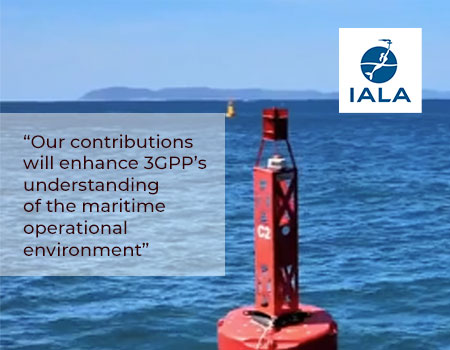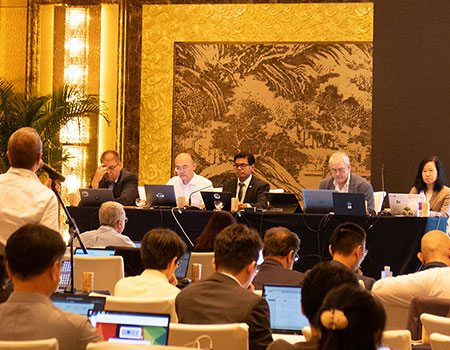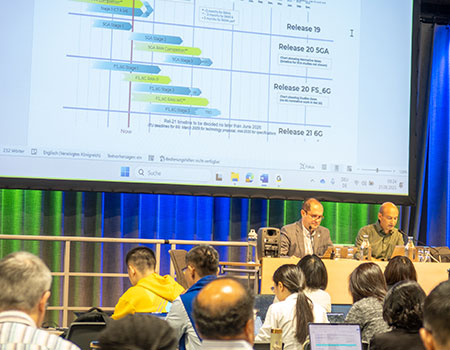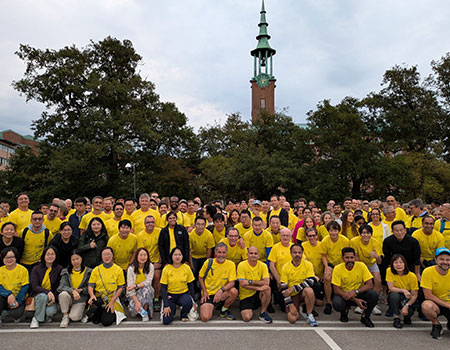In Case of Emergency
Sophia Antipolis, November 20, 2014
Several presentations at the ETSI “In Case of Emergency…” Summit last week touched on the role of 3GPP systems in keeping the lines of communication open under extreme conditions. Policy makers, manufacturers, operators and public safety professionals all contributed to the success of the event.
Here are some highlights:
LTE for Critical Communications
The LTE session heard a variety of viewpoints on how far LTE can go as the solution that ensures the public’s safety.
Vincent Lemonnier, French Ministry of Interior, outlined the French Government’s desire to support a global standard that supports public safety users and the vital infrastructure operators (utilities, railways, airports). He stressed that France favours a dedicated network for guaranteed availability and high security, and also to meet the service level agreement that the operator needs to have with the Government. However, looking to the future, Mr. Lomonnier envisaged a growing role for commercial networks as a “hybrid strategy” for critical communications infrastructures emerges.
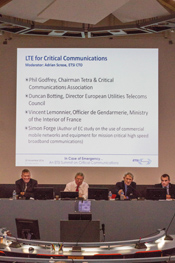 Phil Godfrey, Chairman Tetra & Critical Communications Association, acknowledged the importance of LTE for critical communications, but stressed the need for enhancements before the system meets the need of all users by matching TETRA’s built in robustness and optimization for professional group working.
Phil Godfrey, Chairman Tetra & Critical Communications Association, acknowledged the importance of LTE for critical communications, but stressed the need for enhancements before the system meets the need of all users by matching TETRA’s built in robustness and optimization for professional group working.
Simon Forge, the author of the European Study “SMART 2013‐0016”, looked at the different models for Public Safety networking versus the Commercial Carriers for mission-critical, smart grids and in the transport sector.
Information about the EU Study is published at the Digital Agenda for Europe web site.
Public Warning Systems
There were presentations from two of the early adopters of using mobile networks, to carry messages to the public, in times of crisis.
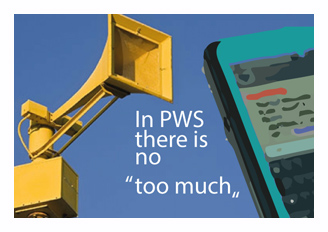 Sadayuki Abeta, ARIB, talked about the steps that have helped the public during recent natural disasters in Japan. He identified two priorities for the Operator in an emergency situation. To activate the public warning system for citizens and to control access to ensure that the network is accessible to the emergency services.
Sadayuki Abeta, ARIB, talked about the steps that have helped the public during recent natural disasters in Japan. He identified two priorities for the Operator in an emergency situation. To activate the public warning system for citizens and to control access to ensure that the network is accessible to the emergency services.
John Tacken (NL-Alert) said that cell broadcast messages in the Netherlands benefit from the coverage of mobile networks. He gave examples of how much more efficient this method is – compared to the National siren system of alerts used in the past. He gave a simple example of a broadcast message to ‘Stop calling 112’ saving lives when the network is under the immense pressure created by an emergency situation.
Post-Incident Recovery & Disaster Relief
The last session of the day addressed the question of how to reduce the loss of life and injury by improved responsiveness in case of emergency, covering some ideas to improve the recovery of networks - post incident - using emerging technologies.
Hiroshi OTA, ITU-T Counsellor, said that “All sectors of ITU are working to contribute to disaster relief, concentrating on relief for individuals, disaster guidance and network resilience & recovery.” Eight Technical Reports are currently available from the ITU – from the Focus Group-DR&NRR page.
Geoff Naldrett, COO British APCO, presented a UK ad-hoc LTE network solution for first responders where there is no or limited network access.
Laurent Franck, ETSI Satellite Emergency Communications Working Group, drew the attention of the Summit to the group's activities on Emergency Communication Cell over Satellite (TR 103 166), on Device categories for ECCS (TS 103 284) and on the current work to meet the challenges of making satellite capacity affordable and accessible.
Summit Conclusions
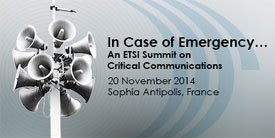 In his summing up Jonas Sundborg, the Outgoing ETSI Board Chairman, went though the key takeaways from each session. He noted that emergencies are about putting people first, but that the solutions must offer the public economy of scale advantages, as modern technologies such as LTE start to provide essential services.
In his summing up Jonas Sundborg, the Outgoing ETSI Board Chairman, went though the key takeaways from each session. He noted that emergencies are about putting people first, but that the solutions must offer the public economy of scale advantages, as modern technologies such as LTE start to provide essential services.
Further details about the speakers and the Summit are on line on the “In case of emergency…” web page.
Contact for this article: Kevin FLYNN, Marketing and Communications Officer, 3GPP

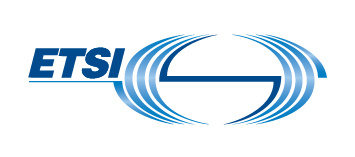
 Partners News
Partners News 